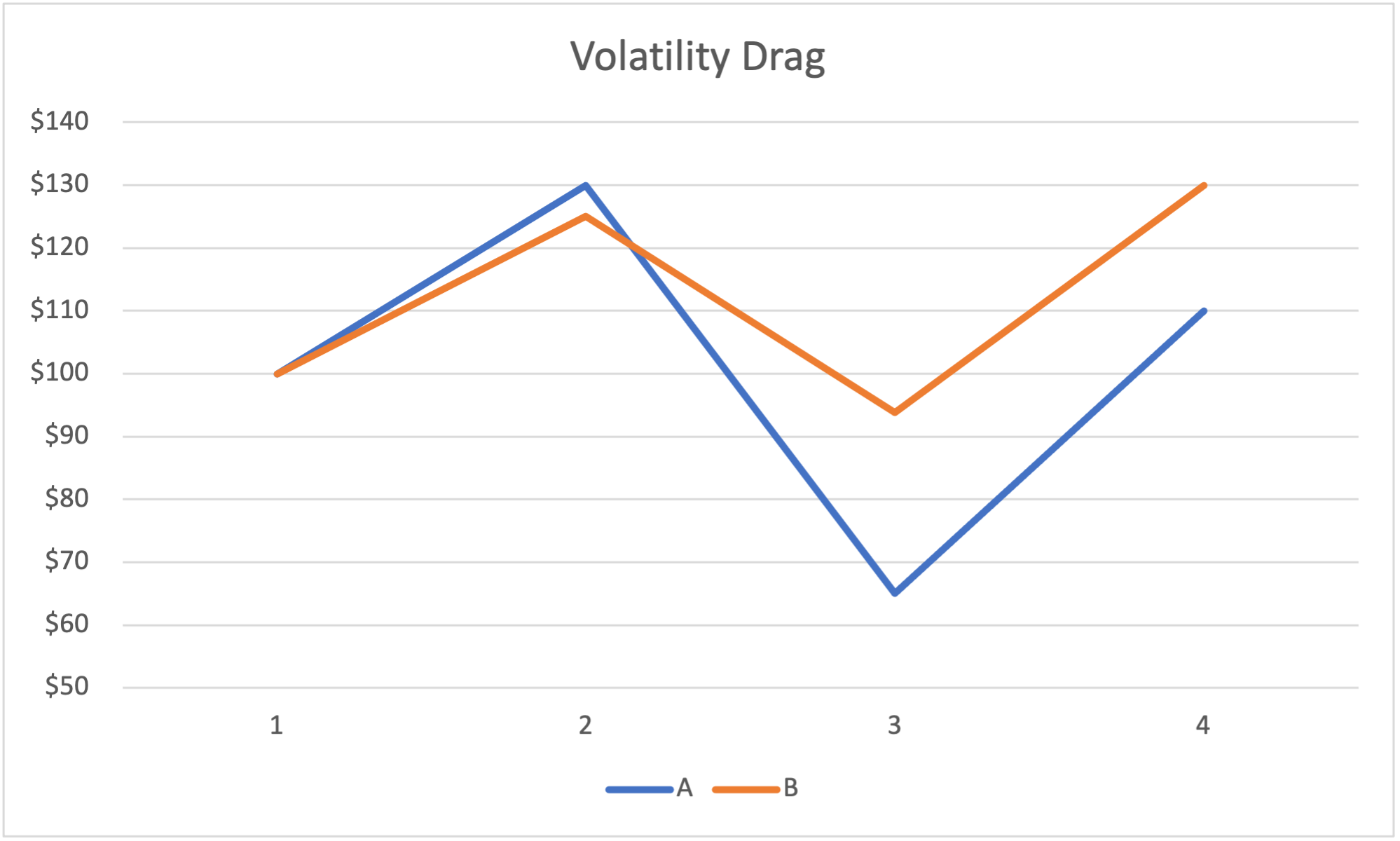Don't let volatility be a drag on your nestegg
In investing there are many risks to consider. One that is often overlooked is volatility drag – particularly for investors who chose to allocate to managed funds or ETFs.
Volatility comes part of the parcel for equity market investors. It can’t be avoided.
However, when your investments are producing higher levels of volatility, this can have a significant drag on your compounded portfolio returns over time, hence the name volatility drag.
Consider the two investment scenarios below, and their returns over 3 periods:
Investment A:
The portfolio goes up 30%, falls 50% and then rebounds 69%, generating an average return of 16.4% per period.
Investment B:
The portfolio goes up 25%, falls 25% and then rebounds 39%, generating an average return of 12.9% per period.
Which is a better long-term investment?
At first glance it might appear the “higher” returning Investment is a better option.
However, you might be surprised to learn that over the three periods, Investment A earned significantly less than Investment B.
Why is this?
The averages quoted in both investments are simple (or arithmetic) averages.
You just add up the 3 numbers and divide by 3 to get the average. They are not the compounded or geometric average returns.
However, apply the magic of compounding to the scenarios and a stark difference between investment outcomes emerges. This is highlighted in the chart below.

As you can see, $100 invested in Investment A increased to $110 over the 3 periods. This is a compound return of 3.2% per period.
$100 invested in Investment B increased to $130. This equals a compound return of 9.1% per period.
Slow and steady wins the investing race
Another simple way of understanding the impacts of high volatility is to consider this.
If an investment falls 50% (as Investment A did above), it needs to go up 100% to get back to square.
Investment B only fell 25% ,so it only needed to rise 33% to get back to square.
So, it’s clear how volatility can eat into compound returns. If two investments have the same arithmetic returns, but one has higher volatility, the most volatile asset will have a lower return due to the “drag” of higher volatility.


The only free lunch in investing
Volatility drag and diversification are intrinsically linked – diversification reduces risk and hence also reduces volatility drag.
The two investments above were not single stocks, rather, they were portfolios of stocks. Investment A was a poorly diversified portfolio of approximately 20 stocks, whilst portfolio B was a well-diversified portfolio of around 100 stocks.
At Plato, across our equity income and global long/short strategies we build well diversified portfolios of stocks for our clients, because diversification is the only free lunch when it comes to investing.
Learn more about Plato Investment Management
Plato specialises in objective-based global and Australian equity investment solutions for retail and institutional investors.
2 funds mentioned

